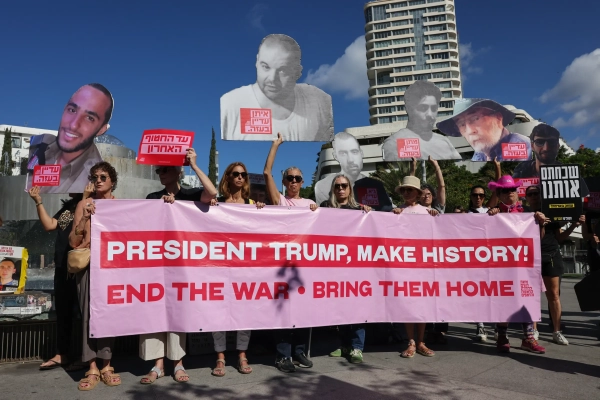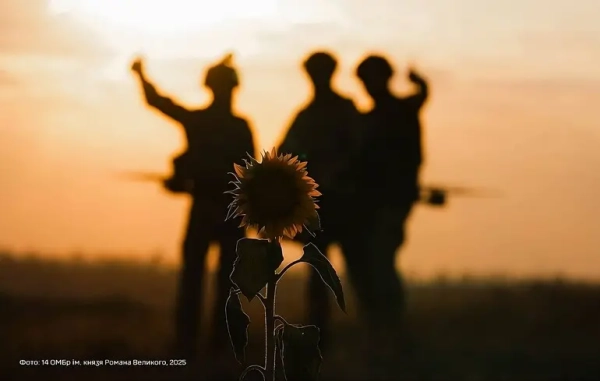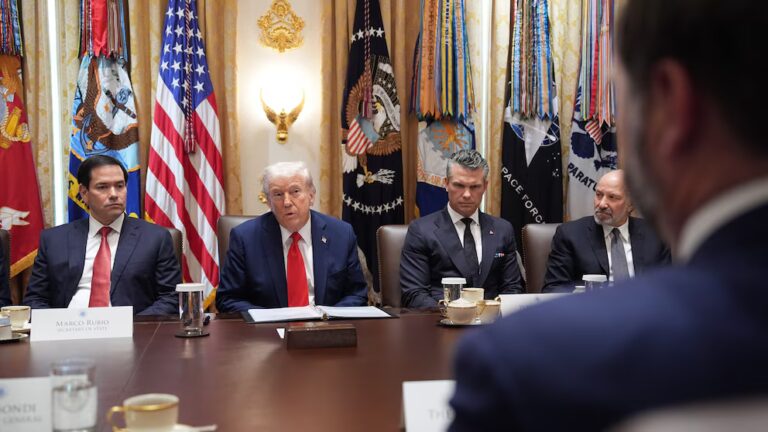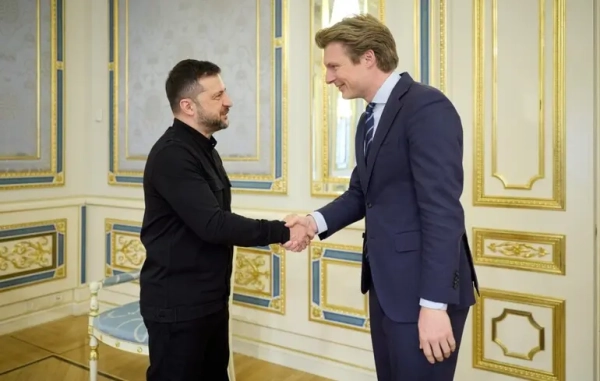“`html 
An accord exists between Israel and Hamas. What is the extent of the agreement?
Both Israel and Hamas have consented to a phased strategy, although only the preliminary phase has been fully established. The crucial aspect involves the liberation of Israeli captives, including the deceased, in exchange for the freeing of Palestinian detainees and a cessation of hostilities. Israel will pull back from significant areas of the Gaza territory, while maintaining a presence on the ground, notably during the initial phase. Most critically, they will cease combat operations. There will be a halt to attacks within Gaza, alongside the authorization of aid deliveries.
Just a month prior, Israel was conducting bombings against Hamas negotiators. How have we reached an agreement one month later?
At this moment, based on the restricted details at our disposal, the principal element appears to be political resolve, specifically emanating from the Trump administration. They had previously de-prioritized efforts toward peace between Israel and Palestine, particularly after their first arranged truce failed in March.
Israel enforced the suspension of aid to Gaza, and the Trump government essentially signaled their approval by inaction. This precipitated a profound humanitarian crisis amidst the conflict, featuring what seemed to be the onset of famine in Gaza.
Recently, the Trump government determined it desired to re-engage in initiatives to conclude the Gaza war. Though the exact timetable remained uncertain, the attack on Doha, Qatar by Israel changed these plans. Considering the Trump administration’s robust connections with the Arab Gulf nations, they expedited their strategy and began to apply intense pressure to all involved parties in a multitude of ways, aiming to enforce a ceasefire.
To what degree should Trump and his administration be credited for achieving this outcome?
Indeed, considerably — provided that initial indications persist. Trump maintained a distinctive association with numerous critical individuals. Trump possesses significant relationships, not solely with Netanyahu and his political standing (Trump enjoys considerable favor among the Israeli right, granting him substantial political power over Netanyahu) but also with the Gulf monarchies and the leaders of Egypt and Turkey.
Qatar, one of these autocracies, stood as a pivotal international ally of Hamas. Trump collaborated with Qatar, Egypt, and Turkey to encourage Hamas to accept the agreement, while leveraging his influence over Netanyahu to attempt to compel the Israelis towards a resolution. The convergence of circumstances has therefore yielded at least a provisional cessation of hostilities.
A prevailing factor involves the lack of genuine desire from either side’s leadership for an end to the conflict on terms agreeable to the other. They were essentially coerced into it. Multiple occasions arose where it appeared both parties intended for negotiations to fail, enabling them to credibly assign blame to the opposing side. Yet, negotiators, notably from the US, consistently rejected this approach, affirming their commitment to continuous advancement.
For example, when Hamas responded to the accord with a conditional acceptance, Netanyahu hastily declared the rejection of the proposal by Hamas. Trump intervened by dismissing Netanyahu’s assessment in private, insisting that the response be treated as an acceptance. Trump prioritized an immediate cessation of hostilities, effectively transforming Hamas’s response into a positive one, contrary to Netanyahu’s perspective.
With the impending return of the Israeli captives, what impact is this expected to have on Israel, politically, socially, and regarding their sentiments concerning the conflict with Gaza?
A significant majority of Israelis favored this settlement, desiring the exchange of captives for a lasting ceasefire. They considered the war unproductive, not primarily due to concerns for Gazan civilians, but due to anxieties regarding the plight and potential deaths of the hostages, as well as the casualties among soldiers and the psychological repercussions of constant military mobilizations.
Additionally, there was a widespread lack of conviction in the tangible benefits derived from the war. While some Netanyahu supporters might have claimed overall victory against Hamas, public opinion surveys in Israel indicated that a majority believed the war was being sustained to bolster Netanyahu’s personal political agenda, aiming to reinforce his coalition, rather than reflecting sound military strategy. Consequently, they welcomed a resolution.
With the anticipated return of the hostages, this outcome appears probable. Although certainty remains elusive, politically, it would pose considerable challenges for Netanyahu to recommence the war, given its unpopularity. Despite Netanyahu’s history of pursuing unpopular measures, potentially conflicting with the interests of the United States presents a larger obstacle. Should Netanyahu proceed, it would likely ensure a significant defeat in the upcoming elections. The prevailing mood among the Israeli population will act as a deterrent against a return to war following this development. However, conflicting with the United States poses a more significant hurdle, something Netanyahu would consider cautiously at this juncture.
Related
- Whether Trump’s arrangement prospers or not, it could result in a victory for Netanyahu.
Doesn’t this place Netanyahu in a bind? He will face pressure from the right wing of his coalition, specifically Ministers Itamar Ben-Gvir and Bezalel Smotrich, to resist withdrawing from the war and the annexations. Will he find himself caught between them and the US?
Netanyahu indeed faces significant adversity. There exist indications of fractures within his coalition at present. Whether this will lead to an actual collapse, triggering early elections, remains uncertain. This outcome could plausibly materialize if enough right-wing partners secede, depending on their assessment of their electoral prospects. Many specific factors are currently unpredictable, but it undeniably situates Netanyahu in a precarious position.
The war itself served as the cohesive element uniting this coalition: the far-right parties sought Netanyahu to permanently seize Gaza and re-establish settlements. Now, if the agreement holds, that scenario appears unlikely, leading to their dissatisfaction. The potential for a coalition rupture escalates. Furthermore, the unresolved issue of conscripting the ultra-Orthodox remains, which, absent the backdrop of war, could prompt them to destabilize the government more readily, given the lack of resolution and their strong discontent.
The situation is rife with complexities, positioning Netanyahu between a rock and a hard place, a state he has occupied for some time. While his extraordinary political acumen, which has made him Israel’s longest-serving prime minister despite being an authoritarian leader facing corruption charges, means one should never dismiss him, his current political situation is far from enviable.
What key aspects will you be observing as we hopefully see this initial agreement materialize?
The foremost aspect to monitor is the proper implementation of the initial phase’s terms, which I believe will occur. Nevertheless, vigilance is essential: Are the captives returned, does Israel retreat to the mutually determined locations, and what about the Palestinian prisoners? Every detail warrants attention, given their abundance.
The second, albeit evident, question merits restating: What transpires during the phase two negotiations? Currently, no agreement exists regarding them. This lack of accord precipitated the collapse of the prior ceasefire. Trump had previously devised a two-phase agreement, with the first phase involving a time-limited ceasefire leading to an indefinite agreement, but the second phase never reached consensus. The present arrangement deviates in that it does not establish a time-bound ceasefire, nor does it specify an expiration date for the deal.
Phase two also addresses more enduring matters. While the viability of phase one remains uncertain, phase two’s significance lies in determining whether substantial changes will occur on the ground, preventing similar recurrences. Regardless of whether the ceasefire persists for a year, two years, three years, or four years, the underlying reality of Hamas control in the Gaza Strip implies the potential for renewed conflict.
Inevitably, either the Israeli or Palestinian side will provoke the other, leading to escalating violence culminating in full-scale war. Although this conflict has proven the most devastating within this pattern, the pattern itself has persisted since Hamas assumed governance over the Gaza Strip two decades ago. This pattern is not novel, but predictable. Israel even coined the strategic term “mowing the grass” to describe it, a terrible equilibrium precipitating disaster for the residents of Gaza and limiting prospects for a lasting peace agreement ensuring everyone’s security.
Related
- The somber insight Israel — and the global community — might glean from the Gaza war’s conclusion
Will efforts be directed toward addressing the hawkish Israeli stance contributing to repeated outbreaks of conflict? Will measures be implemented to address Hamas’s control of Gaza? Will these efforts link to broader political negotiations facilitating an authentic peace accord and the establishment of a Palestinian state? These existential questions will ultimately dictate whether this ceasefire serves as a temporary measure, enduring longer than its predecessors, or marks the commencement of a lasting foundational agreement. Given the accuracy of pessimistic forecasts regarding the Middle East in recent times, optimism may be unwarranted; however, the possibility of a favorable outcome exists and is more tangible than in recent days. This development is heartening.
“`
Source: vox.com






